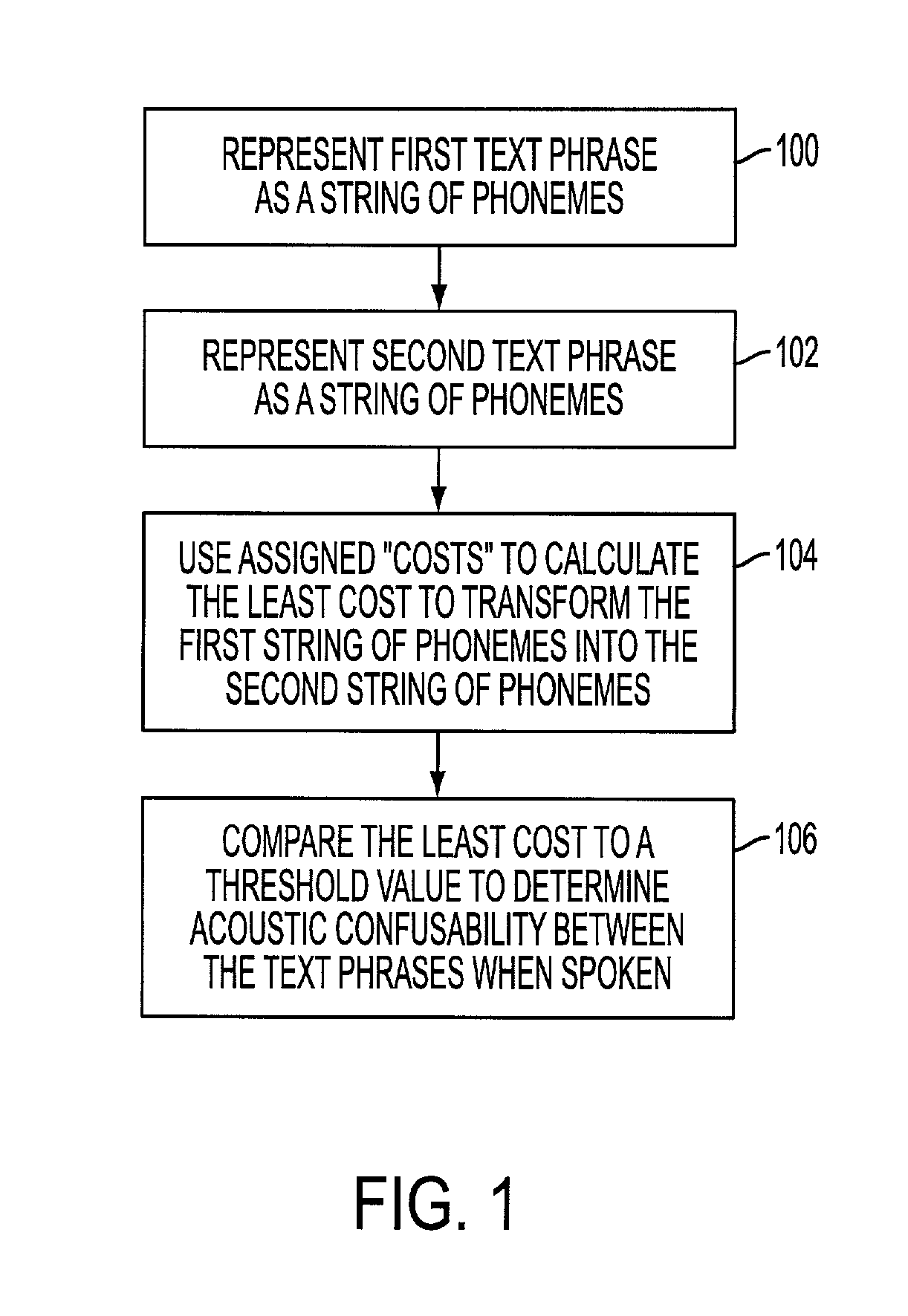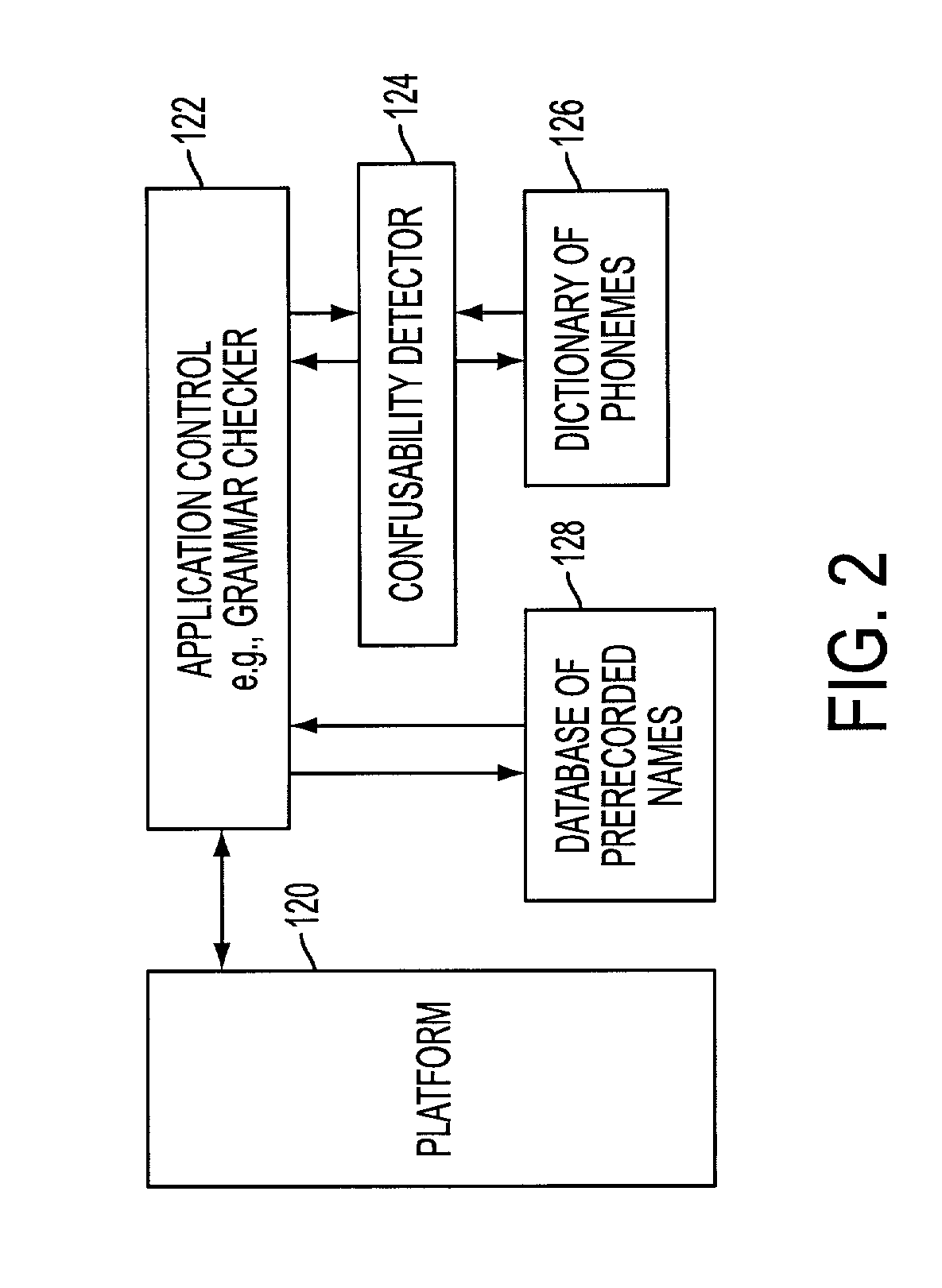Method of assessing degree of acoustic confusability, and system therefor
- Summary
- Abstract
- Description
- Claims
- Application Information
AI Technical Summary
Benefits of technology
Problems solved by technology
Method used
Image
Examples
second embodiment (cases 1 and 2)
[0057]A second embodiment (cases 1 and 2) of the present invention provides a method and system to predict when a speech recognizer will confuse spoken phrases by using any combination of spoken phrase representations of a text form and an audio file, and a sequence of Acoustic Features (AFs) as an intermediate representation of the spoken phrase representations and as a metric of distinctiveness. The present invention can, for example, use the AFs disclosed by Stevens and Salomon. These Acoustic Features reflect the primary acoustic characteristics of spoken phrases. Similarities in strings of AFs correspond to similarities in pronunciation and therefore to confusability by a speech recognizer. The method can be used to calculate a “confusability metric” between any combination of a pair of spoken phrase representations (i.e., any combination of a text form of a spoken phrase and an audio file of a spoken phrase to be recognized by a speech recognizer).
[0058]FIG. 3 is a flow diagra...
PUM
 Login to View More
Login to View More Abstract
Description
Claims
Application Information
 Login to View More
Login to View More - R&D
- Intellectual Property
- Life Sciences
- Materials
- Tech Scout
- Unparalleled Data Quality
- Higher Quality Content
- 60% Fewer Hallucinations
Browse by: Latest US Patents, China's latest patents, Technical Efficacy Thesaurus, Application Domain, Technology Topic, Popular Technical Reports.
© 2025 PatSnap. All rights reserved.Legal|Privacy policy|Modern Slavery Act Transparency Statement|Sitemap|About US| Contact US: help@patsnap.com



